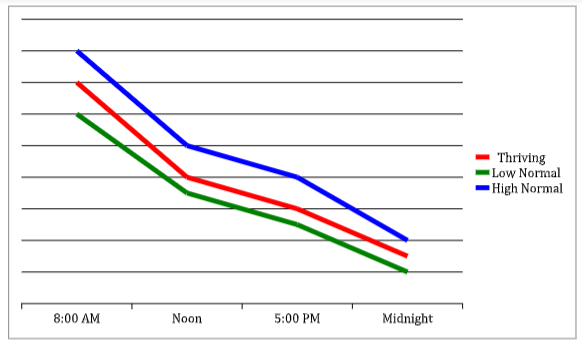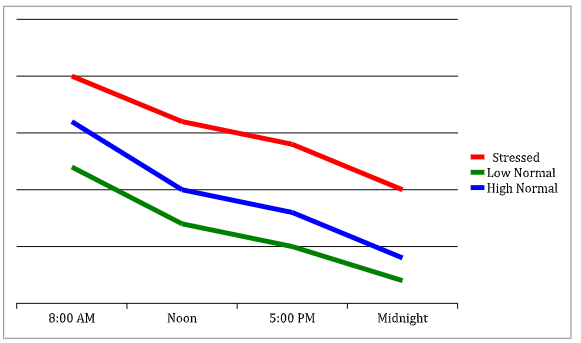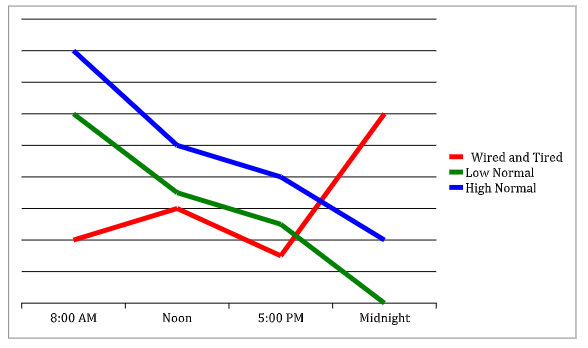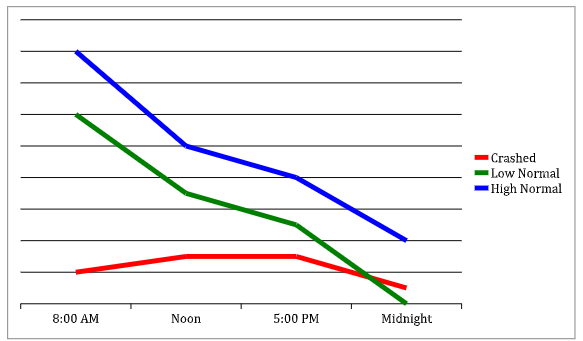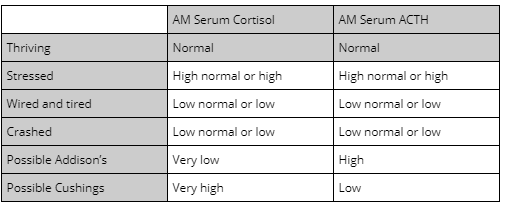Understanding Adrenal Slopes
One of the more dramatic examples of this entire idea of adrenal stress is known as the Whitehall II study. This was done on a group of British civil servants, between 2002 and 2006, with a large range of adults involved3.
What the researchers were doing was tracking all the various health metrics, including their ‘cortisol slope.’ So, let’s start by expanding on this idea.
When it comes to cortisol, we should make a lot of it in the morning and shut it off at night. If you plot those two lines together, you get a very clever slope (like a ski slope, from up to down).
They have shown that the cortisol slope is independent of how much cortisol you have. So, it’s not just about whether you have enough, but if you have the right slope.
This could mean you have normal amounts, but it’s the same all day, or if it is backward, or if it is always low. In this sense, it’s not bad because of the amounts, but because of the pattern of those amounts. Even the best amounts, when they don’t slope, can have a negative effect.
Breaking Down The Study
In this previously mentioned study, they were checking a variety of health metrics, like:
- Weight
- Blood pressure
- Cholesterol
- Blood pressure
- Smoking status
But, what they also did was check for this cortisol slope. They kept an eye on this large group of people, monitoring things like heart attacks and death, and the results were pretty shocking.
It turns out that this cortisol slope was one of the biggest predictors when it came to death, and one of the biggest predictors of cardiovascular death. In some cases, even more so than smoking status!
All of this is to say that our cortisol slope is real, and it is a very big deal. It has huge effects upon our health.
Now, here is the great thing: we can play our own active role in changing it.







